Have you ever encountered a construction blueprint and felt completely bewildered? For those who are not familiar with blueprint symbols, they can seem like an unfamiliar language. However, these symbols play a crucial role in architectural planning and construction, particularly in Philadelphia. In this blog post, we will delve deep into the historical development of blueprint symbols in Philadelphia and explore their impact on architecture. We will also explore the meanings of common blueprint symbols, such as those used for architecture, electricity, and plumbing. Additionally, we will examine the challenges that architects face when interpreting these symbols and how they influence the planning and construction processes. Lastly, we will touch upon the future of blueprint symbols in architectural drawings philadelphia and discuss how technological advancements may affect them.
Historical Evolution of Blueprint Symbols in Philadelphia
Blueprint symbols in Philadelphia have evolved over time to reflect changes in architecture, electrical, and plumbing practices. They’re crucial for communication between professionals and ensuring project success. Studying their evolution provides insight into the development of American architecture. Modern symbols are essential for professionals to understand, and exploring their history connects us to the city’s architectural legacy and American architecture’s rich history.
Understanding Common Blueprint Symbols
Blueprint symbols are essential in architectural drawings, providing vital information about building design and construction. They allow architects, engineers, and construction professionals to effectively communicate their ideas and ensure accurate execution. In this section, we explore common blueprint symbols used in Philadelphia and their significance. Architectural symbols represent elements like doors, windows, stairs, and walls. Examples include solid lines for walls, dashed lines for doorways, and circles for columns. Electrical symbols depict power outlets, light fixtures, switches, and more. Plumbing symbols indicate the location of pipes, valves, faucets, and fixtures. Understanding these common blueprint symbols is crucial for effective collaboration in the design and construction process.
Architectural Symbols
Architectural symbols are crucial in architecture as they serve as a universal language for design communication. In Philadelphia, these symbols hold historical and cultural significance, reflecting the city’s architectural heritage as the birthplace of the United States. One of the most prominent symbols is the Lincoln Memorial, which pays tribute to President Abraham Lincoln’s contributions to the nation. Philadelphia’s architectural symbols also showcase diverse styles, from colonial-era buildings to modern skyscrapers, representing the evolution of American architecture. These symbols convey both design elements and deeper meanings, highlighting their historical and cultural significance in Philadelphia. Understanding these symbols allows architects to create designs that honor the past while embracing the future.
Electrical Symbols
Electrical symbols are standardized and essential in blueprints for understanding a building’s electrical layout. These symbols represent various components such as switches, outlets, lights, and circuit breakers. Architects, engineers, and electricians rely on them to design and install electrical systems accurately. Understanding these symbols is vital for safety and functionality. They facilitate effective communication between professionals, reducing installation errors and ensuring safe operation of electrical systems. Regional variations may exist, so consulting local codes is essential. In conclusion, electrical symbols are integral to blueprint reading and understanding a building’s electrical layout.
Impact of Blueprint Symbols on Philadelphia Architecture
Blueprint symbols have had a significant impact on Philadelphia’s architecture. Influenced by American history and architectural movements, these symbols have shaped the city’s skyline. One notable structure is the New York – Philadelphia High-Speed Rail Line, whose blueprint incorporated symbols representing American history and progress. These symbols provide visual cues for architects, engineers, and builders, ensuring efficient construction and safe outcomes. As Philadelphia evolves, modern-day symbols reflect advancements in design and technology. Blueprint symbols will continue to guide and preserve the city’s architectural legacy as it embraces the future.

Influential Structures and Their Blueprints
Blueprint symbols played a significant role in shaping Philadelphia’s architectural landscape. They conveyed construction plans and showcased unique designs. The influential United States Capitol Building in Washington, D.C., though not in Philadelphia, is worth mentioning for its impact on American history and architecture. Moving closer to Philadelphia, the Empire State Building in New York showcased the vision of American architecture. Abraham Lincoln’s memorial in Washington, D.C., captured his enduring legacy. In Philadelphia, structures like the Philadelphia Museum of Art embody the city’s artistic heritage. These influential structures and their blueprints represent a fusion of art, history, and technology, telling a story of innovation and dedication to creating timeless buildings. Through blueprint symbols, these structures came to life and left an indelible mark on Philadelphia’s architectural landscape.
How Blueprint Symbols Influence Planning and Construction?
Blueprint symbols play a crucial role in the planning and construction process. They visually represent the intended structure, aiding in design and ensuring accurate interpretation. Construction workers rely on these symbols to understand layouts and materials, while standardized symbols facilitate collaboration among stakeholders. Efficient planning and construction are achieved through clear blueprint symbols.
Influence on Construction Processes
Clear and precise blueprint symbols are crucial in guiding construction workers and minimizing errors, delays, and rework. They provide a standardized communication tool for architects and construction workers to collaborate effectively. Additionally, blueprint symbols ensure compliance with building codes and regulations, helping projects meet requirements and legal guidelines. In conclusion, blueprint symbols play a significant role in construction processes by guiding, minimizing errors, ensuring compliance, and facilitating effective communication and collaboration.
What Challenges Do Architects Face When Deciphering Blueprint Symbols?
Deciphering blueprint symbols can be challenging for architects due to their complexity and intricacy. Collaborating with other architects may also pose difficulties as different individuals may use slightly different symbols. Inaccurate or outdated symbols can lead to errors in the design and construction process, resulting in costly mistakes and delays. Architects must continuously update their knowledge of blueprint symbols as new technologies emerge.
The Future of Blueprint Symbols in Philadelphia’s Architecture
Advancements in technology, such as augmented reality, have the potential to revolutionize the use and interpretation of blueprint symbols in Philadelphia’s architecture. With the ability to overlay digital information onto physical spaces, architects may be able to visualize and interact with blueprint symbols in new and exciting ways, enhancing the design and construction process.
The future of blueprint symbols also lies in the continued development of digital platforms and software. These tools will streamline the creation, sharing, and modification of blueprint symbols, making it easier for architects to collaborate and communicate their design intent. By using standardized, universally recognized blueprint symbols, the architectural community can ensure clear and efficient communication, regardless of geographic location or project complexity.
As technology progresses, blueprint symbols may become even more interactive and immersive. Stakeholders, including clients, builders, and even the general public, could potentially experience and understand complex architectural designs through the use of virtual reality or other digital mediums. This enhanced visualization can help bridge the gap between the abstract nature of blueprint symbols and their real-life implications, leading to better-informed decision-making and a more accurate representation of the final design.
Conclusion
In conclusion, blueprint symbols have played a significant role in shaping the architecture of Philadelphia over the years. These symbols have evolved alongside technological advancements and have become a crucial tool for architects and construction professionals. By understanding and interpreting these symbols, architects can effectively plan and construct buildings while ensuring accuracy and efficiency. However, deciphering these symbols can sometimes pose challenges due to variations in interpretations and changes in symbol meanings over time. Nevertheless, blueprint symbols continue to be a vital aspect of Philadelphia’s architectural landscape, and as technology continues to advance, we can expect further evolution and innovation in the use of these symbols in the future.







